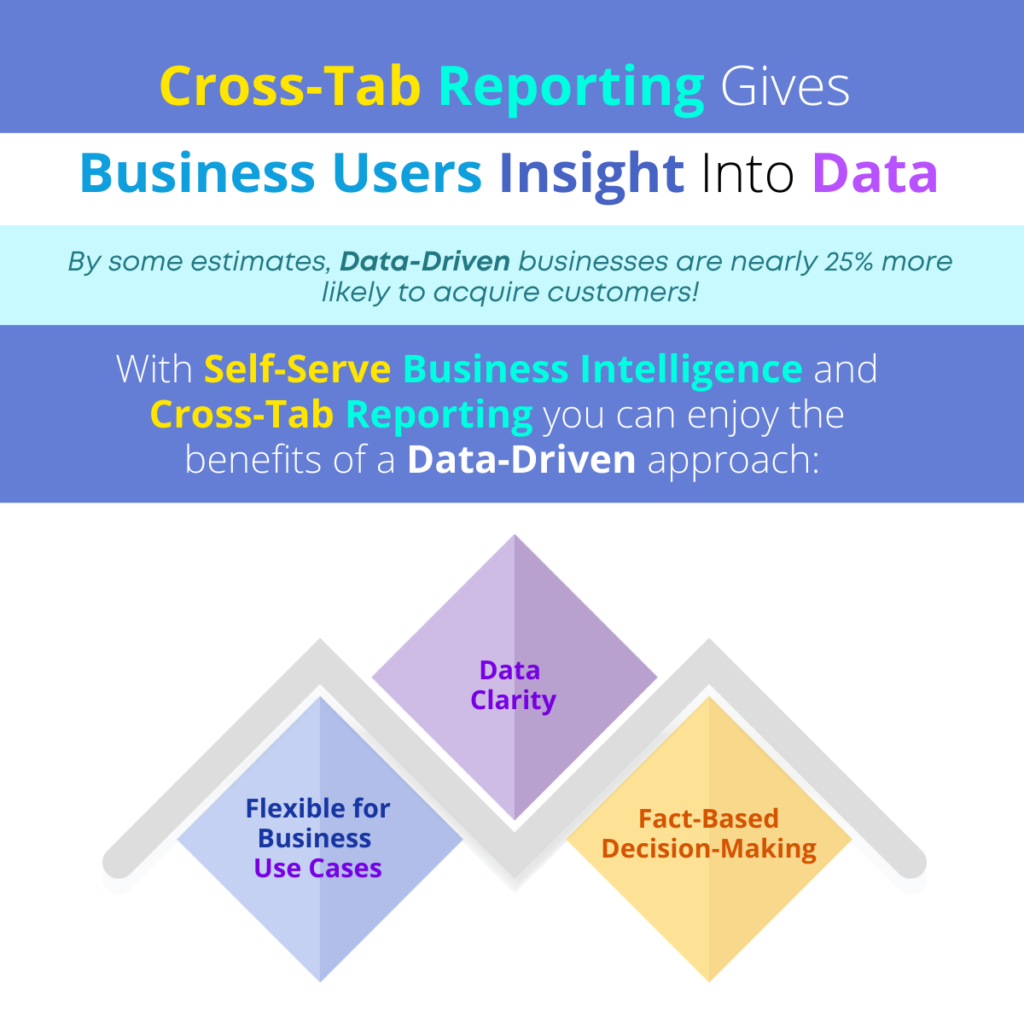Understand the Benefits and the Challenges of a Business Intelligence Strategy!
If you follow industry and business publications, you know that analytics are taking the lead in business strategy. Gartner states that, ‘90% of corporate strategies will explicitly mention information as a critical enterprise asset and analytics as an essential competency.’ If your enterprise is implementing a business intelligence and analytics strategy, it is important to plan carefully and to understand the real benefits as well as the challenges of choosing the right BI tools and deploying these tools to users in a way that will ensure optimal user adoption and leverage of analytics to achieve the results you need.
‘Your business should carefully assess requirements and plan for expected user adoption by selecting a BI tool that will offer the features, ease-of-use and functionality your team members need.’
In this article, we provide examples of the various benefits of BI tools for specific business functions and some of the technology and user challenges you will face as you consider your options and plan for implementation.
No matter the business function, there are benefits to implementing a business intelligence strategy that will deploy these tools to your team members. Here are some examples:
Benefits
Finance – Your organization will be more efficient and profitable, with Ready-to-Use Dashboards, Analysis, and KPIs designed especially for the Finance domain. This business intelligence solution includes interactive Dashboards that allow users to perform intuitive, easy analysis of key metrics including Profitability, Accounts Receivable, Accounts Payables, Cash Flow Analysis, Past Due Invoices, Balance Sheets, Income Statements and more!
Inventory – Inventory business function allows users to accurately plan and optimize inventory. Interactive Dashboards track item movement, compare sales to closing stock, and monitor warehouse stock and value, and answer critical questions regarding stock turnover ratio, seasonal buying, back-order assessment and safety stock to prevent lost sales. Users can analyze inventory levels to effectively manage stock based on the buying behavior of customers.
Purchasing and Procurement – Allows users to view and analyze spending details, analyze procurement data, drill through data to analyze issues, measure performance, identify savings opportunities, and track supplier performance. Identify reliable trading partners, analyze supplier cost, perform purchase rate comparisons, reveal trends, identify top/bottom vendors, and achieve timely insight into spending patterns and trends across all departments.
Production – Quantify and visualize data at the operational level to make fact-based decisions. Analyze Output, Reduce Labor Costs, Maintain Inventory Levels, Optimize Equipment Performance, Monitor Rejection Ratios and Downtime, and take action before problems arise to mitigate risk, and capitalize on opportunities. Publish automated reports to monitor and manage plant performance and provide management with quality metrics and relevant data.
These are just a few examples of how business intelligence can be used within a business function, department or business unit to benefit business users and to help the organization make fact-based decisions, spot trends and patterns and opportunities, and identify the root cause of problems.
If you want to take advantage of all of these benefits and ensure success of your business intelligence initiative, your business should carefully assess requirements and plan for expected user adoption by selecting a BI tool that will offer the features, ease-of-use and functionality your team members need.
Technology and User Challenges
Social BI
Your team members are also consumers and outside of the office they are used to a collaborate and social experience. By engaging in Social BI, your team can champion data sharing, collaborate on creative ways to analyze data and make quick work of data analytics, with tools that allow the user to ‘like’, ‘share’ and leverage other social tools and networking techniques.
Mobile BI
Not every BI tool provides real mobile business intelligence to accommodate every type of device, screen size and resolution. Choose a solution that has a Responsive and Adaptive UI engine, so you can roll out BI tools on any Desktop, Tablet or Smartphone without any device specific development. ‘Design once, Use anywhere’ concept in true sense.
Personalized Dashboards
Business users will not adopt a solution that limits them to predefined dashboards. Each user has a need to see and use data in a different way. Be sure to select a solution that allows your users to work in a way that is meaningful to them.
Interactive, NOT Restrictive
Choose a solution that will allow users to leverage deep dive analytics. There is no way an organization can anticipate every question or type of analytics a business user will need to incorporate into decision-making. Provide truly interactive tools that will assure user adoption and make your organization more agile.
Ease-of-Use
Advanced Data Discovery allows business users to perform early prototyping and to test hypothesis without the skills of a data scientist. Advanced Data Discovery ensures data democratization with Self-Serve Data Preparation, Smart Data Visualization and Plug n’ Play Predictive analysis that can drastically reduce the time and cost of analysis and experimentation.
‘No matter the business function, there are benefits to implementing a business intelligence strategy that will deploy these tools to your team members.’
Ready-To-Use Business Intelligence tools can support data democratization and improve your business results. If your business understands the challenges of implementing a business intelligence solution and adequately plans for implementation and user adoption, it can leverage the benefits of these tools and solutions and ensure success. Let us help you achieve your vision and improve productivity and insight across the organization.
Original Post : Address the Challenges and Achieve the Benefits of BI Tools!










